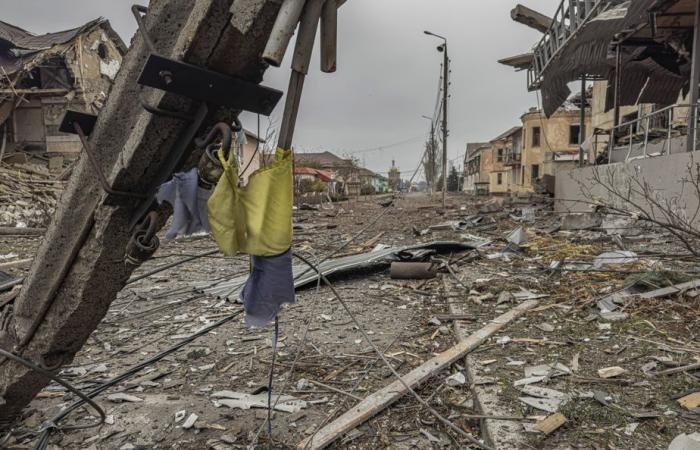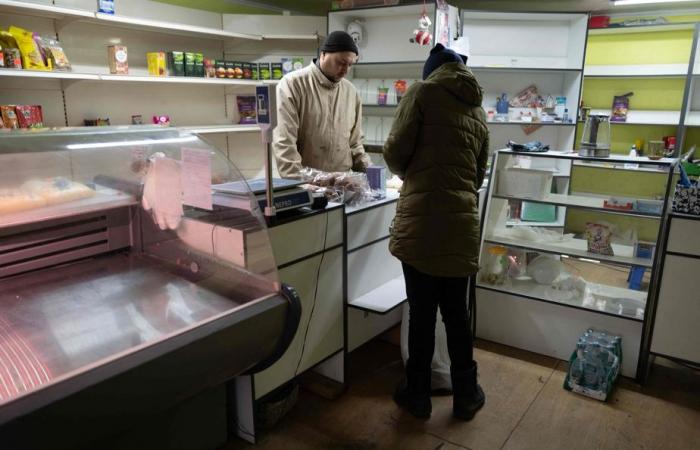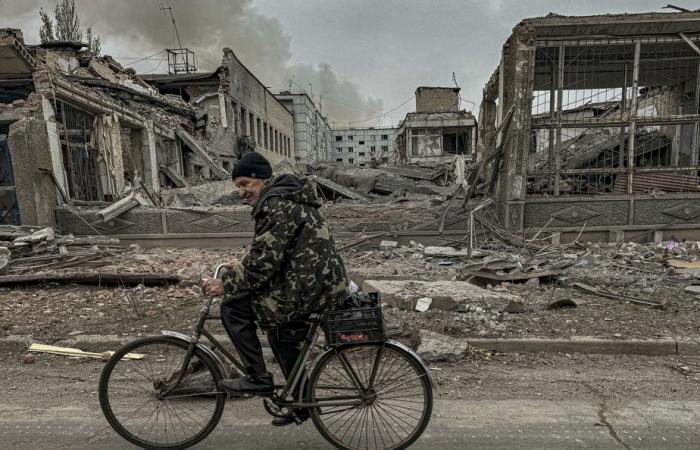(Kurakhove) Along the road to Kurakhove, in eastern Ukraine, ghost houses line up, carcasses shattered by bombs, lined with peppers that are moldy on the vine, and flower beds strewn with debris.
Posted at 4:11 p.m.
Florent VERGNES
Agence France-Presse
The region and its villages are today sandwiched by Russian forces advancing to the North, South, and East, forcing the population to flee again and again.
The Russian army continues to advance in this area which contains a large lithium deposit and is located south of Pokrovsk, an industrial city and a major logistics hub for the Ukrainian forces.
It is in this region that Russia has made its greatest advance since the beginning of October, according to an AFP analysis carried out on Monday using data from the Institute for the Study of War (ISW), a research center. American reflection.
“Save your life”
In the neighboring town of Andriïvka, the grocery store stalls are as sparse as the customers, the majority of civilians having left.
PHOTO FLORENT VERGNES, AGENCE FRANCE-PRESSE ARCHIVES
The last grocery store in the town of Andriïvka, remaining until the electricity was cut off.
“These are the last loaves of bread, take them,” the grocer said to a customer.
Despite the Russian bombs that “fly every day”, Anatoliï stays to run the last grocery store in the region and help the elderly and disabled people from the surrounding villages who have not yet evacuated: “Those who have nowhere to go , those who have no money, no parents.”
But when the electricity goes out, then the 37-year-old grocer will join his wife and young child, already gone, who “have seen enough in three years of war”, since the Russian invasion of Ukraine in February 2022.
In fact, the road in the region is covered by minibuses marked “evacuation”, while messages calling for people to flee are multiplying on the telephones: “Dear residents of the Donetsk region! Save your life and that of your loved ones! Evacuate! “, we can read.

PHOTO ANTON SHTUKA, ARCHIVES ASSOCIATED PRESS
A man rides a bicycle in front of the post office that was destroyed by a Russian airstrike in the Donetsk region.
Fédir Gjyvine, 69, is not yet considering leaving. He surrounds himself with jars of vegetables to get him through the winter and stores them in his small shelter where he takes refuge daily during Russian strikes.
What if the heating fails? “Then we will go down to look for coal in the mine,” retorts Fédir in a defiant tone, who, despite his age, would like to “fight for his country”.
He concedes, however, that he will leave if the Russian forces approach again, to join his daughter who lives 400 kilometers further west. “But I have time,” he assures.
Time is quickly running out, with Moscow having already announced that it has captured the town of Voznessenka, about fifteen kilometers as the crow flies from Andriïvka.
“We want peace”
Upstream, one of the reservoirs of the artificial lake of Kourakhové was damaged by Russian fire according to the regional governor, raising fears of flooding.
But if the river has burst its banks in places, it has not yet affected any homes, AFP noted.
In the town of Datchné, very close to the lake and the front line, the facades of the houses are blackened with soot, the horizon is streaked with smoke and the explosions of the artillery resonate continuously.
Olga left her house to see a new crater, left by yet another Russian shell which fell on her village again.
Standing in the deserted street, she awaits the peace “in 24 hours” promised by newly elected US President Donald Trump, who has spoken of an agreement with Russia in the event of victory in the presidential election.
“We just want peace,” laments the 59-year-old teacher whose school is now a pile of ruins that bear witness to the violence of the air attacks, “even if we have to deal with the devil.”
Fifteen kilometers to the west is the border between the Donetsk region and that of Dnipropetrovsk, towards which the Russian army continues to advance.
In this direction, the newly constructed defense lines are visible for kilometers, each grove becoming a defense zone, each field clawing out new trenches, where barbed wire and defensive concrete blocks grow. Enough to arouse among the inhabitants the fear of an even deeper Russian advance.








